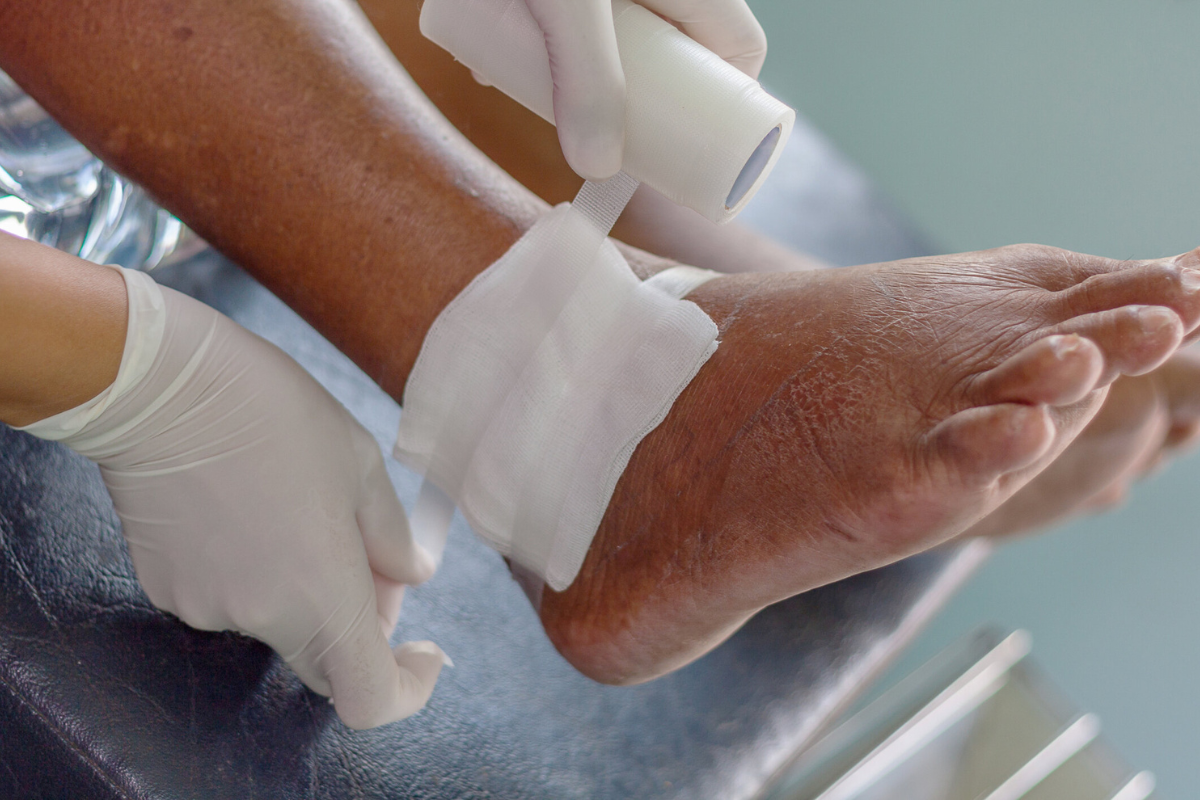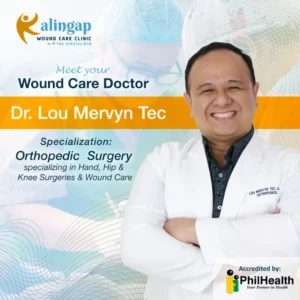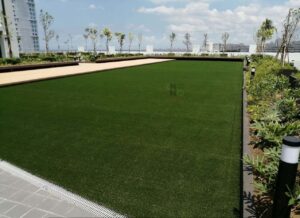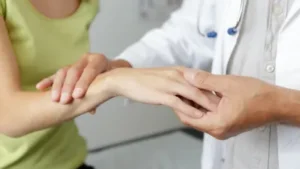Orthopedic treatment for non-healing wounds is an evolving field that bridges the gap between traditional wound care and advanced orthopedic interventions. Chronic wounds, often marked by their resistance to standard treatments, present a significant challenge for patients and healthcare providers alike. This guide explores how specialized orthopedic care can promote healing, alleviate discomfort, and ultimately improve overall mobility for those suffering from these persistent conditions.
Understanding Non-Healing Wounds
Non-healing wounds, commonly referred to as chronic wounds, are lesions or ulcers that persist without significant improvement over an extended period. These wounds do not follow the typical healing trajectory due to various underlying factors, making them particularly difficult to manage. Patients with chronic wounds often experience ongoing discomfort, limited mobility, and an increased risk of complications such as infections.
The prolonged nature of these wounds is typically linked to systemic health issues. Underlying conditions—such as diabetes, vascular insufficiencies, and prolonged pressure from immobility—interfere with the body’s natural healing processes. Chronic inflammation, poor blood circulation, and a weakened immune response are common factors that contribute to the persistence of non-healing wounds.
Common Medical Conditions Leading to Chronic Wounds
Certain medical conditions create a predisposition for developing chronic wounds. For instance:
- Diabetes: Elevated blood sugar levels can damage nerves and blood vessels, hindering circulation and reducing the body’s ability to repair tissue.
- Peripheral Arterial Disease (PAD): Reduced blood flow, particularly to the extremities, deprives tissues of the necessary oxygen and nutrients required for healing.
- Pressure Ulcers: Prolonged pressure on the skin, often due to immobility or extended bed rest, leads to tissue damage that can evolve into non-healing wounds.
- Obesity and Immobility: These conditions further complicate wound healing by placing additional strain on the circulatory system and limiting the body’s capacity for tissue repair.
Understanding the root causes of chronic wounds is essential for devising an effective treatment plan, as it allows healthcare providers to address both the symptoms and the underlying factors simultaneously.
The Role of Orthopedic Care in Treating Non-Healing Wounds
Orthopedic treatment for non-healing wounds plays a pivotal role in not only addressing the wound itself but also improving the patient’s overall musculoskeletal health. Specialized orthopedic care goes beyond conventional wound management by incorporating interventions that enhance mobility, reduce mechanical stress on the affected area, and optimize the healing environment.
For patients suffering from chronic wounds, maintaining mobility is often a major concern. Reduced mobility can lead to further deterioration of muscle and joint function, which in turn can worsen the overall condition. Orthopedic treatments are designed to counteract these issues by:
- Reducing Pressure: Utilizing offloading techniques and custom orthotics to relieve stress on the wound area.
- Enhancing Stability: Improving joint alignment and support through physical therapy and supportive devices.
- Facilitating Circulation: Encouraging movement and weight-bearing activities that stimulate blood flow, which is crucial for healing.
By integrating these approaches, orthopedic care not only promotes wound healing but also restores functionality and enhances quality of life.
How Advanced Orthopedic Care Promotes Healing
Advanced orthopedic treatment for non-healing wounds involves a multidisciplinary approach that combines surgical interventions, physical therapy, and state-of-the-art technologies. Some of the key interventions include:
- Debridement: A procedure that involves the removal of dead or infected tissue, which can accelerate the healing process by reducing the risk of infection.
- Offloading Techniques: Strategies such as specialized footwear or custom orthotics that redistribute pressure away from the wound site, allowing it to heal.
- Physical Therapy: Tailored exercise programs designed to improve circulation and strengthen muscles, thereby promoting faster recovery.
- Imaging and Diagnostics: The use of advanced imaging technologies helps in assessing the wound’s status and guiding treatment decisions.
Each of these techniques is carefully coordinated to create a treatment plan that addresses the specific needs of the patient. By combining these modalities, orthopedic specialists can significantly improve healing outcomes and reduce the likelihood of wound recurrence.
Advanced Treatment Options and Technologies
The landscape of orthopedic treatment for non-healing wounds is continually evolving, with innovations that enhance both diagnostic and therapeutic outcomes. Cutting-edge technologies are increasingly being integrated into treatment protocols, ensuring that patients receive the most effective care possible. Some innovative approaches include:
- Regenerative Medicine: Techniques such as stem cell therapy and platelet-rich plasma (PRP) injections are being explored to stimulate tissue regeneration and accelerate healing.
- Advanced Wound Dressings: New materials and dressings that provide optimal moisture balance, reduce infection risk, and promote tissue repair.
- 3D Imaging and Modeling: Enhanced imaging methods allow for precise assessment of the wound and surrounding tissues, leading to more targeted interventions.
- Laser Therapy: The use of low-level laser therapy (LLLT) to stimulate cellular activity and improve blood circulation in the affected area.
These technologies represent a significant leap forward in the management of chronic wounds. They not only expedite the healing process but also offer a more personalized treatment experience for each patient.
Integrating Technology and Personalized Care
One of the most significant advancements in the field is the move toward personalized treatment plans. Orthopedic specialists now have access to a range of diagnostic tools that allow them to tailor interventions based on the specific needs and conditions of the patient. For example, 3D imaging and modeling provide detailed insights into the wound’s structure and the surrounding anatomical features, enabling a more precise application of therapies.
Personalized care plans are developed through collaboration among a team of experts, including orthopedic surgeons, wound care specialists, physical therapists, and nutritionists. This multidisciplinary approach ensures that all aspects of the patient’s health are considered, leading to a more effective and sustainable recovery process.
Benefits of Orthopedic Treatment for Chronic Wounds
The benefits of orthopedic treatment for non-healing wounds extend far beyond the wound itself. By addressing both the local and systemic factors that impede healing, orthopedic interventions offer a comprehensive solution that can lead to:
- Reduced Pain and Discomfort: By alleviating mechanical stress and improving support, orthopedic treatments help reduce the pain often associated with chronic wounds.
- Enhanced Healing Rates: Removing dead tissue and improving circulation accelerates the body’s natural healing process.
- Improved Mobility: Restoring stability and function through physical therapy and supportive devices allows patients to regain mobility, which is crucial for overall health.
- Prevention of Complications: Effective management of chronic wounds reduces the risk of infections and other complications that can arise from prolonged wound care.
- Better Quality of Life: With reduced pain, improved mobility, and enhanced healing, patients experience a better overall quality of life, allowing them to return to normal daily activities.
Preventing Non-Healing Wounds
Prevention is a critical component in the management of non-healing wounds. Early intervention can often stop a minor wound from evolving into a chronic condition. Some effective prevention strategies include:
- Regular Monitoring: For individuals with diabetes or vascular conditions, routine check-ups and early detection of wounds are vital.
- Proper Footwear: Especially for patients prone to pressure ulcers or diabetic foot wounds, specialized footwear can help distribute pressure evenly and prevent injury.
- Skin Care Regimens: Keeping the skin moisturized and protected can reduce the risk of developing wounds.
- Managing Underlying Conditions: Controlling blood sugar levels, improving circulation, and maintaining a healthy lifestyle are all essential in preventing non-healing wounds.
- Patient Education: Educating patients about the importance of early treatment and proper wound care techniques can empower them to take proactive steps in managing their health.
Daily Practices for Wound Care and Mobility
In addition to professional medical interventions, daily practices play a significant role in wound prevention and overall mobility improvement. Patients can adopt several routines to safeguard their health:
- Routine Exercise: Engaging in light physical activities, such as walking or swimming, can improve circulation and overall fitness.
- Balanced Nutrition: A diet rich in vitamins, minerals, and proteins supports tissue repair and overall immune function.
- Skin Inspections: Daily monitoring of the skin, especially in areas prone to pressure or injury, helps in early identification of potential wounds.
- Consistent Medical Follow-Up: Regular consultations with healthcare professionals ensure that any emerging issues are promptly addressed.
By incorporating these practices into daily life, patients can significantly reduce the risk of developing chronic wounds and maintain better overall health.
Takeaway
Orthopedic treatment for non-healing wounds represents a beacon of hope for patients struggling with chronic wounds. Through a combination of advanced technologies, personalized care plans, and comprehensive interventions, modern orthopedic care not only accelerates healing but also restores mobility and improves quality of life. As the field continues to evolve, the integration of innovative techniques and preventive strategies will play an increasingly crucial role in managing these complex wounds.
For anyone experiencing persistent wound issues, exploring orthopedic treatment options can lead to remarkable improvements. Consulting with a specialist who understands the nuances of chronic wound care is the first step towards a healthier, more active future. With the right approach, even the most stubborn wounds can be effectively managed and healed.




